×
[PR]上記の広告は3ヶ月以上新規記事投稿のないブログに表示されています。新しい記事を書く事で広告が消えます。

Another bunch of console related items arrived this monday, missing the weekend, because I would have enjoyed it too much if the package arrived on friday. Oh well, no point in complaining now, since the stuff is here to stay. Since you always should protect your handheld consoles, especially their sensitive screens, I got myself some new screen protectors for Nintendo DS Lite and PSP 2000, and a crystal case for the DS. Because accessories that keep your console safe from harm aren't too exciting, I also got a EZ Flash V 3 in 1 espansion cartridge, but I'll get to that in a minute.
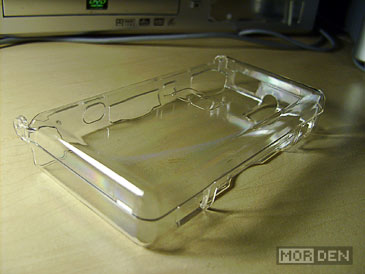
I'm not a huge fan of external covers for handhelds. I always keep my consoles in cases designed to protect the hardware when I'm not using it. What ultimately convinced me of getting the crystal case for my DS Lite, was the console's smooth surface combined with its black color, which made it into a fingerprinting machine. I am a clean person and I always wash my hands before I play, but it's simply impossible not to leave fingerprints all over the DS Lite. The constant wiping and cleaning may eventually lead to some scratches, and I would much rather wipe the crystal cover than the DS itself.
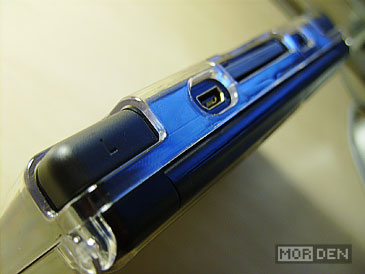
I wasn't expecting much when I ordered this, as it was a $2 product, but I was pleasantly surprised once I put the cover on my DS. It firs perfectly and the console itself is only slightly bigger. I was afraid it would feel awkward to hold it, but it doesn't. The only thing I did react to was the access to shoulder buttons. The case doesn't cover them in any way, but the fingers can no longer rest in the same way I was used to. It is however only a matter of adjustment. After a few games I didn't really think about it. Changing the volume will feel different as well, but because of the cover you will no longer change the volume accidentally, which did happen to me many, many times.
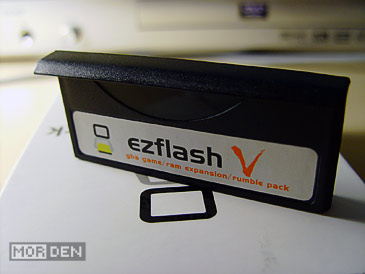
Now, how about that EZ Flash V 3 in 1? I have never really thought about getting one of these, but since many homebrew applications use or even require additional RAM - which I didn't have up until now, because I thought it was pointless to buy a Nintendo DS browser just to get it, and other alternatives seemed a bit expensive - and there are some games that utilize the rumble feature, I thought why not? The price-tag was just under $19 including shipping, and if I didn't get it now, I probably never would. So I ordered it, excited about the new possibilities and some positive vibrations.
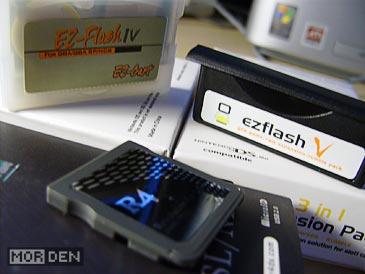
The first thing I noticed when I took it out of its box was the build quality. It leaves much to be desired and getting it in the first time was a problem. For a second I thought it wouldn't fit the slot, but as it turns out, you have to insert it at a slight angle. Once the cartridge was in, I popped Metroid Prime Hunters into slot one and got ready for the vibrations. No such luck. The game didn't see it. Apparently, I didn't research it well enough, and the rumble feature is available, but only through certain flash cart firmwares or special loaders, which in its turn means that the feature caters to those who use ROM images rather than original games. Supposedly there is a way to make it work with originals, but I haven't had the time to look into it.
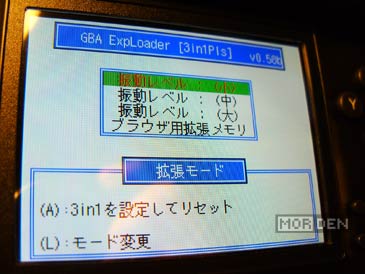
Since the vibrations didn't work as I thought, I wanted to check what does work. After trying several things I realized that EZ Flash V 3 in 1 is anything but user friendly. In fact, getting it to work seemed like a chore at first, before I read a bunch of documents and downloaded appropriate software. Just to clarify what the three functions of this cartridge are: It is a RAM expansion, a Rumble Pak and a Game Boy Advance flash unit featuring both PSRAM and NOR memory, with the NOR being able to hold only one program at a time. Only after getting Rudolph's GBA ExpLoader I could really test the cartridge. Since the GBA NOR memory can hold only one program, I loaded Gleam, an excellent freeware Lumines clone onto it and that's probably what I'm going to use the GBA feature for the most. It's important to note that EZ Flash V 3 in 1, in conjunction with a slot one flash device, is capable of backing up and restoring original Nintendo DS game save data, as well as backing up whole Nintendo DS games.
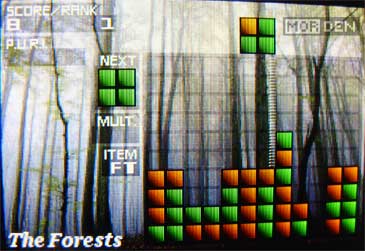
After the initial failure to get the rumble feature working, I tested the ram expansion, which doesn't require additional programs to run, but the homebrew software has to be compatible with this particular expansion model. Not too long ago, a ScummVM porter named Agentq released a special ScummVM DS build capable of running SCUMM Ver. 7 games, Full Throttle and The Dig, utilizing RAM expansion. This was the first homebrew application I tested the extended RAM function with, so I had my fingers crossed when booting it, but it worked. So far I have only tested Full Throttle, which I recently completed on PSP. Sadly, the save games weren't compatible, so to see if the game really works, I will have to finish it, which I might, since I have all of the puzzles fresh in my memory. I haven't tested The Dig yet, but since it's the same SCUMM version, I can't see a reason why it wouldn't run.
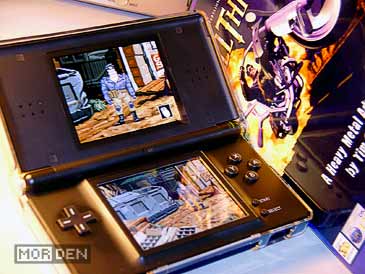
Another homebrew application using the RAM expansion is the Quake 2 port by Drunken Coders. While the DS port of Quake did not require additional RAM to run, but did use it for improved performance if an expansion was present, Quake 2 won't start without it, as it is more demanding a game, with more detailed models and texturing. First Quake running on a DS is impressive in itself, but seeing Quake 2 run at an acceptable and playable speed is awesome. I only took the demo pak for a quick spin, but I'll probably be loading the whole game onto my R4 soon. I am really curious how this port will do later in the game and whether or not it will work with the Quake 2 expansions.
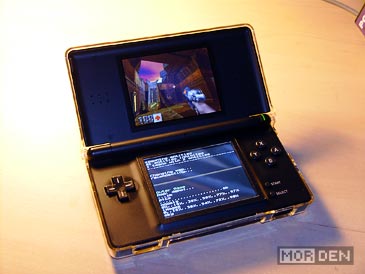
Well, that's about it, I think. I know there's a lot of bitching and whining in this entry, but if you're considering a purchase of EZ Flash V 3 in 1, don't be discouraged. Just know that it won't work out of the box, since it was designed to work with the slot one EZ Flash V, which supports the expansion from the firmware level. I did get the vibrations to work using ROM images of the games I legally own - The only thing I had to do, was to start the GBA ExpLoader and choose the vibration strength. There are about fifty Nintendo DS games that use the rumble feature, so it's nice to know I can feel those vibrations if I really want to - In other words, I won't completely neglect the rumble functionality. I will however continue using the EZ Flash IV when it comes to Game Boy Advance homebrew in general, but running Full Throttle, The Dig or Quake 2 wouldn't be possible without the RAM expansion. All in all, I think this little gadget was worth the money I paid for it. I will have some fun with it, and the best part is, since it's black and shaped like the original slot 2 cover, you won't even know it's there.
PR

How many Sonic games can you count? Thirty? Fifty? I don't know the exact number and I can't be bothered to count them all, but there are a lot of Sonic titles out there - some better than others. Yuji Naka's hedgehog has been around for about eighteen years now, and while back in the nineties the blue rodent was all the rage among gamers, the series has since then managed to tumble down the rabbit hole of mediocrity, Sega Saturn period being a noticeable turning point towards the seemingly inevitable demise of this franchise.
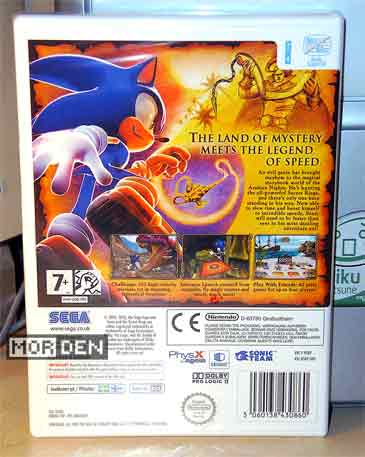
The definite highlight of the whole Sonic series, for me anyways, was the MegaDrive era. Sega had a powerful piece of hardware at their disposal, and they knew exactly how to use it to make their blue lightning bolt run faster than ever. The remade Sonic [and Later Sonic CD], along with Sonic 2, 3 and Sonic & Knuckles are to this day a benchmark for a properly made, fast platformer. Sega had it right back then - they perfected the formula, and if they had decided to go with all 2D Sonic games until this very day, I'd still buy every single one of them.
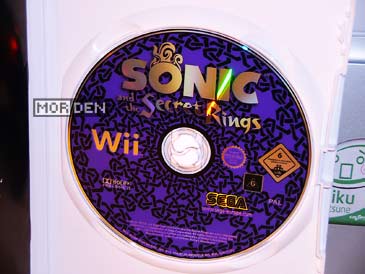
Unfortunately, you can't cling to the ways of 16-bits when the competition is hard at work, utilizing every bit of resource available, to make their 32-bit debut a guaranteed win. While Nintendo did not fail its fans, releasing Mario 64 on their 32-bit console, and while Sony, thanks to Naughty Dog, enjoyed alot of success with the newly created Crash Bandicoot franchise, Sega did not seem to be trying hard enough to recreate the flawless Sonic experience we all remembered from the MegaDrive days.

If you have but once experienced how it is to measure every single platforming game by Sonic the Hedgehog and Mario standards, you probably know exactly what I am talking about. It seems that even though Nintendo lost some votes among Mario fans, platform adventures featuring the italian plumber still manage to surprise in an absolutely positive way, while Sega seems to be gasping for air while drowning in a sea of bad ideas. I absolutely loved Super Mario 64 and later Super Mario Sunshine - was there a memorable Sonic game for the Saturn? Not that I can think of. Was there a good Sonic title present on the GameCube or Xbox? Unless Sonic Heroes strikes your fancy, again, no.
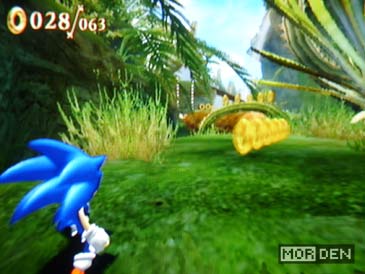
You'll have to excuse or overlook my "the past and present of Sonic" rant, but I figured I'll type down some thoughts, since it's probably the first time I discuss Sonic the Hedgehog on my blog, aside from a brief mention of Sonic CD. It's just that every time a Sonic game comes out nowadays, I'm getting ready to be disappointed by default. How come I don't expect anything good from Sonic these days? It used to be a strong brand which, like Mario, was never supposed to go down the road of forced and cheap sequels.
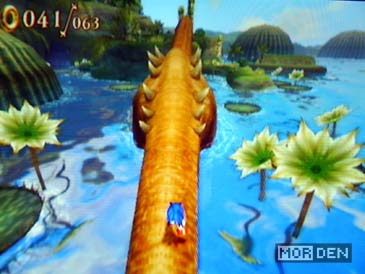
But enough about that - let us focus on the title at hand, which is Sonic and the Secret Rings for Nintendo Wii. As usual, I am fashionably late to the party, acquiring a title that's been around for almost as long as the Wii itself. Fortunately for me, Secret Rings was a nice game back then ,and its charm has not worn off just yet. There arent that many big platforming titles for the Wii, anyway - not to get this one would be like turning ones back to one-fifth of the decent Wii platform game line-up.
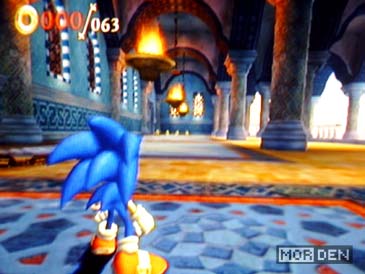
As we all know, Wii is not your regular kind of console. It's far behind the competition when it comes to processing power and it features some peculiar controls. Secret Rings is a Wii exclusive and there's a reason behind this: The whole game is built around the Wii controls. Your character will always run unless you conciously press a button to stop him, and you turn left and right by tilting your Wii remote, which you hold horizontally. There are a couple of special moves and a jump button, of course, but this kind of gameplay would not work on other platforms, that's for sure.
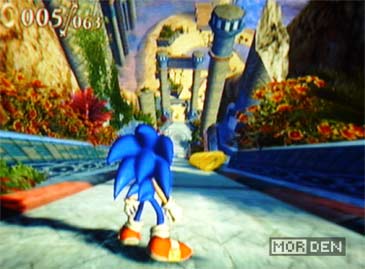
When you play Secret Rings for the first time, you instantly feel that this time around Sega did try something new, perhaps in an act of desparation, trying to make things better for their blue mascot. The game feels kind of fresh, taking a step aside from numerous Sonic Adventure clones. Most of the gameplay will have your characters locked onto a path from which you can't stray. This makes things fluent and enjoyable enough to justify the rather annoying and unresponsive controls. Even though you'll probably end up dying a hundred times in a row on some stupid obstacle, the game still keeps you motivated and for some reason you do want to see what's next.
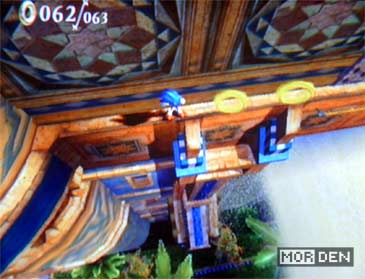
Now for the strangest part - While Wii may be well behind Xbox 360 and PlayStation 3 in the graphics processing department, Sonic and the Secret Rings looks better than any other Sonic game you've seen in a long, long time. The levels are enormous and I dare you to find a situation which causes the game to drop frames. It's all speed and eye-candy for Sonic this time around. If the uninspired storyline won't push you forward in your quest, an urge to see more of the gorgeous graphics surely will. Secret Rings is running smoothly thanks to the incredibly efficient Renderware engine, in conjunction with Ageia PhysX. This is a second, or rather first time Sonic Team chose PhysX for reasons unknown to me. Just like in NiGHTS: Journey of Dreams, you can't really tell if a physics engine is used or not, since everything behaves exactly as it would in Sonic Adventure, or any other more recent Sonic game.
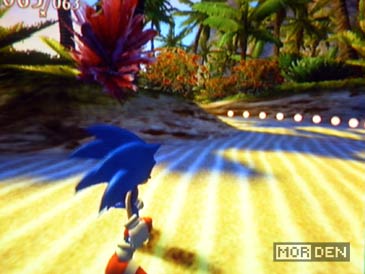
The soundtrack is what you would expect, having played a couple Sonic games from the aforementioned Sonic Adventure upwards. It's a nice blend of soft to harder rock, spiced up with some middle eastern vibes. Strangely enough, the usual Sonic tunes seem to be absent, which is slightly disappointing. Having these memorable tunes present in every Sonic game makes you feel at home, and while this isn't vital to the gameplay, familiar tracks might compensate for some of the games shorcomings- Don't get me wrong, however. The soundtrack is great and you'll probably catch yourself humming "Seven Rings in Hand" after playing this game for a while.
I know I didn't mention anything about the storyline, but what's there to mention, really? It's your standard "save the world" plot, with a twist of Arabian Nights and alot of cameo appearences. Sonic is an action game and I'd be lying if I said that I cared for the story in any of the hedgehog titles. During the MegaDrive days there was little to none emphasis on the story and it worked just fine. Nowadays people expect something more and something is exactly what they will get. Sonic and the Secret Rings is a nice game, featuring some amazing graphics, plus a handfull of minigames. Just like NiGHTS: Journey of Dreams, it's worth a try and the chances are you won't regret this purchase. That's it for me this time around - there are still so many games I want to write about but, as usual, I'm to lazy to type it all up. Keep me motivated, dear readers.

Again, a package from Cryptic Allusion arrives, containing a yet another prize. If you didn't know this, let me tell you - Cryptic Allusion contests are probably the easiest contests on this planet. You can win stuff just by following simple instructions, like sending a PM to CA staff at their boards. So again, I recieve a prize and this time it's Space Invaders Revolution for Nintendo DS.
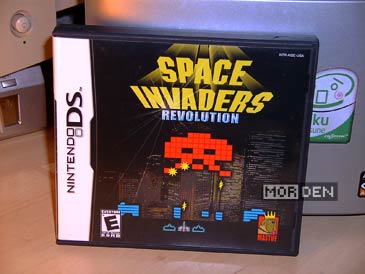
If you can think of a more iconic title than Space Invaders, representing the whole videogame industry, please drop me a comment and tell me what that title is. And no, Pong does not count, because a paddle is not an instantly recognizable game character and aliens from Space Invaders are.
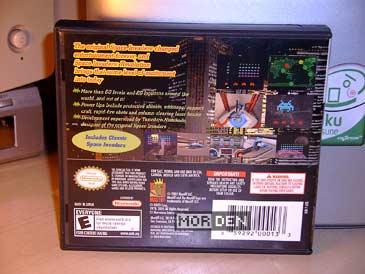
Let me think for a second - how many different Space Invaders variations have I played? Too many to be bothered with remembering, that's for sure. Last time I played Space Invaders was when I got both volumes of Taito Legends and I was rather pleased with the relatively fresh looking Space Invaders '95. How does Space Invaders Revolution look and play, then?
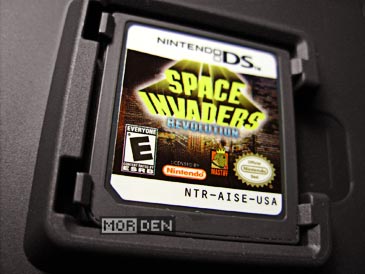
I'm going to be brief, because there isn't much to talk about here. The word "revolution" in the title might just indicate that you're up for a wild ride through new ideas applied to the old Taito formula. Sadly, people responsible for this port were probably after some quick cash and nothing more. This so called revolution is nothing more than regular Space Invaders plus some slight variations in weapons department.
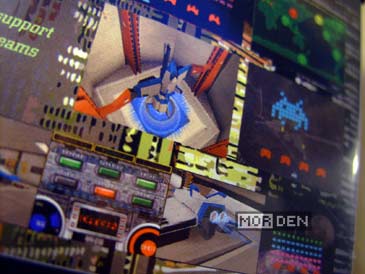
This is rather disappointing. Space Invaders were around since 1978 and that's all the developers could come up with in their Revolution? Except for the regular version of the game you can play a slightly altered one but the changes are almost purely cosmetic. Some polygonal cutscenes were added and they feel completly detached from the rest, to say the least. You're better off picking up the amazing Space Invaders Extreme by Square - This game will show you that there's still plenty of things that can be done with this classic title.

Many gamers, me included, always thought that NiGHTS: Into Dreams for Sega Saturn was one of those games that were perfect just the way they were and didn't need a sequel, and so, Sega and Sonic Team were quite hesitant to mess around with a title that was so dear to many. Finally, over ten years after the original game hit the market, a sequel for Nintendo Wii was released.
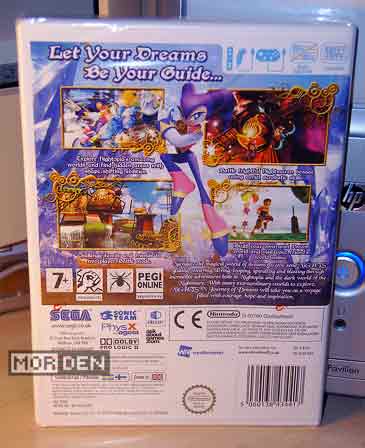
I took my time before I picked this game up. I didn't know what to think and it didn't seem to sit well with most of others out there, so I waited until it dropped in price. When it finally did, I bought it thinking "how bad can it really be?". It turns out it's not that bad at all. On the contrary, it's pretty good. Taking Wii's limited resources into consideration, Sega did a fine job when it comes to gameplay. There are however few major flaws and before I start praising the good, let's take a look at the bad.
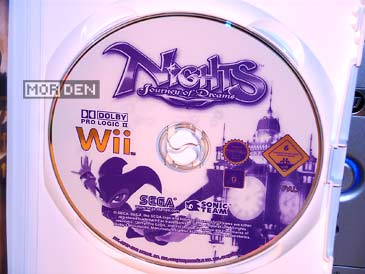
NiGHTS: Into Dreams was a simple game. There's a story noone really cares for, you start the game and you play. You fly around and collect stuff. It was fast, colorful and impressive. When you look at the gameplay from the Wii version, not much has changed. The main thing that makes me want to toss the game disc across the room however, is the storytelling part. Before you even get to play, you have to listen to a rather lenghty introduction. You can't skip the boring talk and it's pretty annoying. Same goes for every new level opened. Before you get to play, there's always a sequence explaining why you have to do what you're about to do, which is fly around and collect stuff.
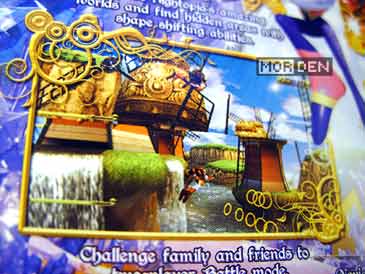
The story is rather shallow, taking more or less everything from the first game, and while the first game was all about booting the disc, pressing start and playing, the Wii sequel is about seemingly endless cutscenes spiced with brief moments of gameplay. You can skip the cutscenes on your second play-through, but that's no good if you don't want to listen to all the babble first time around. Second thing that I could and will complain about are the game physics. Don't get me wrong, there's absolutely nothing wrong with them. I was just surprised when I saw the game ads specifically mentioning the physics engine used.

NiGHTS: Journey of Dreams uses PhysX engine by Ageia [nowdays owned by Nvidia] which is also used by Unreal Engine 3 in such games as Gears of War or Unreal Tournament 3. In those games you can actually see the impact of advanced physics simulation on the gameplay. In NiGHTS' case however, you can't really tell that it uses a physics engine. At first glance, everything moves just the way it did back in Sega Saturn days. From what I can gather, PhysX was even meant to be a selling point for NiGHTS or at least an important asset.
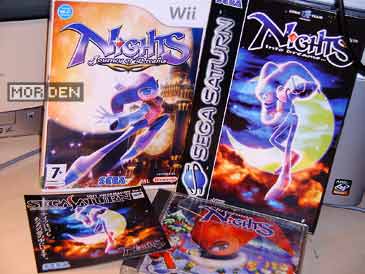
Now for the good. When you finally get to play, you'll notice the game did recieve a graphics boost but everything else remains rather unchanged. In other words, if you liked the old NiGHTS, you should like the new one nearly as much. The gameplay is really solid, but I recommend using the GameCube or Classic controller. Wii's own controls are a bit off if you ask me. Another thing worth mentioning is the soundtrack. Music in this game is simply superb. I could wander around the level selection area just to listen to the tune played there. Same goes to game levels.
If you're a fan of the original game and you're not discouraged by the presence of lenghty and annoying cutscenes, you should get this game. I can only assume that you will play through it once, and after that the cutscenes can simply be skipped after you've endured them during the first pass. Sega could have tried a bit harder and some of the things seen in the game seem a bit rushed, like the level select area, which is a bit lifeless and bland, and can be a turn-off right fron the start. If you get past the initial annoyance, the game turns out to be a splendid sequel retaining everything the original game had in terms of gameplay.

The days of glory for lightgun games were pretty much over well before Wii came along and when Nintendo announced a new platform with its innovative wireless controls, being a lightgun game fan I got my hopes up. I used to think that maybe Wii would revitalize the lightgun genre somehow but time had shown that I couldn't have been more wrong. Lightgun games did appear, but there still are very few titles to choose from, and most of them we've already seen on other platforms [like House of the Dead 2 & 3].
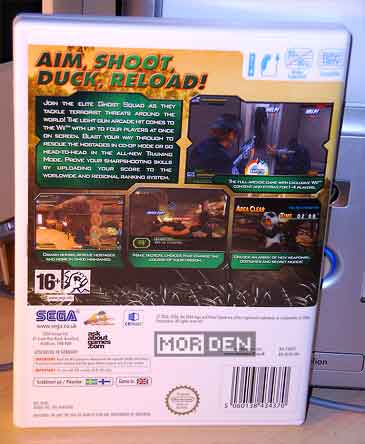
I was exceited when I first heard about Sega porting Ghost Squad to Wii. I spent alot of time with the arcade version of this game and I was always fond of Sega lightgun titles. So how well did the porting go and how does Ghost Squad look and play on a home platform compared to a dedicated arcade machine?
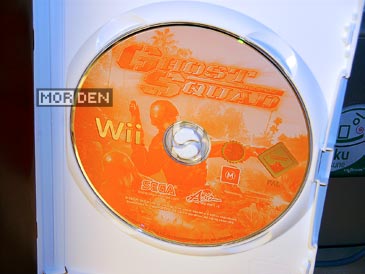
The game does very well on the Wii and you don't even need the plastic piece of crap Nintendo likes to call Zapper. With the crosshair on, you can enjoy the game using just the remote and it won't be less fun, I promise. That's how I play it and if it doesn't bother me, I can't see how it could bother anyone else. Originating from an Xbox based Chihiro arcade board, Ghost Squad isn't anything that Wii couldn't handle and the graphics look the way they looked on the arcade machine. No complaints here. The gameplay is still solid, and everything works, so what is there to complain about? There has to be something, right?
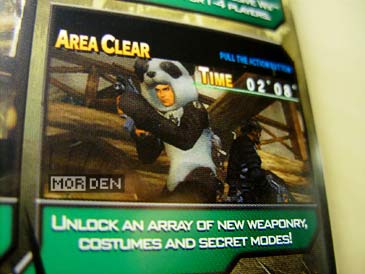
I guess the most serious issue is the game length. Ghost Squad consists of only three stages which can be completed pretty quickly. Sega could have tried harder if you ask me, but all they did to add to the replay value is a bunch of bonuses and a stage and character leveling system. Once you finish a stage, you can play it on a higher level. Changing levels aren't only about difficulty, but also about the graphics. A certain stage will look different on another level. Day will turn to night or sunset, enemies will attack in different ways, multiple routes will open.

The game features two bonus modes. Ninja mode - where you throw shurikens at bad guys who now are dressed like ninjas, and so are you and your squad. Paradise mode - where weild a dolphin shaped water gun and squirt the water at bikini clad baddies and ridiculously looking boss characters showing tanlines from bras and such. It's all fun but it doesn't really add that much to the game. Ninja mode plays just like the regular mode would and the only thing different in Paradise mode, except for the graphics, are the horrible sounds your wiimote makes when using the dolphin gun, and the fact that you have to tweak your aiming since the water tends to arch down when shot out of the gun.
Ghost Squad is a really fun game, especially if you love Sega lightgun games, which all tend to have the same atmosphere around them. It's beyond me however, why Sega didn't port Virtua Cop 3, which just like Ghost Squad, runs on Chihiro board, but is longer, bigger, better and more bad-ass. By clicking on the video link above you can check out a small game review showing some of the additional costumes and modes, aswell as a quick playthrough. If you find this game for cheap, pick it up and get yourself on the internet ranking boards. I wouldn't pay a full retail price for this one and the main reason I picked it up was the pricetag and my love for the arcade original. Sega can do better. They just can't be bothered these days, it seems.
カレンダー
| 11 | 2025/12 | 01 |
| S | M | T | W | T | F | S |
|---|---|---|---|---|---|---|
| 1 | 2 | 3 | 4 | 5 | 6 | |
| 7 | 8 | 9 | 10 | 11 | 12 | 13 |
| 14 | 15 | 16 | 17 | 18 | 19 | 20 |
| 21 | 22 | 23 | 24 | 25 | 26 | 27 |
| 28 | 29 | 30 | 31 |
カテゴリー
フリーエリア
最新CM
[02/23 jikoo]
[02/23 jikoo]
[02/21 sara]
[01/04 Inlagd]
[11/21 Inlagd]
最新記事
(01/31)
(01/27)
(01/04)
(11/14)
(11/12)
最新TB
プロフィール
HN:
No Name Ninja
性別:
非公開
ブログ内検索
最古記事
(12/17)
(12/19)
(12/23)
(12/25)
(03/30)
P R


